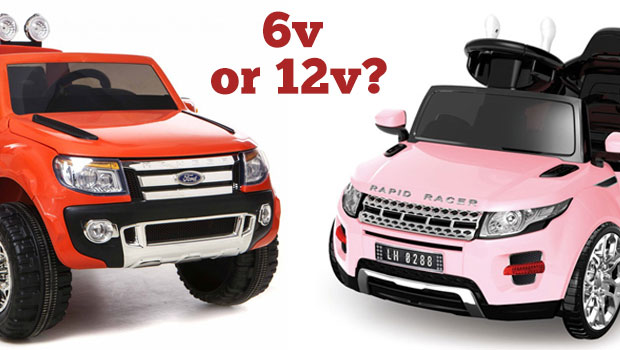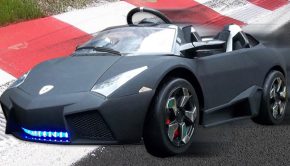What is the Difference Between a 6v and 12v Ride on Car?
We’re asked all the time what the difference is between our 6v and 12v cars, so if you’re confused, read on and we’ll answer all your questions.
First off, lets start with the basics. What does the ‘V’ stand for? The ‘V’ in 6V and 12V stands for ‘volts,’ a measure of electrical power, and refers to the power required to run the car’s motor. We sell cars with 6V motors, 12V motors and even a couple with 24V motors. The higher the number of volts, the more powerful the car. So a 6V kids electric car is the lowest power, a 12V is higher, and a 24V even higher than that.
But what does voltage mean? What is the difference between a 6V and a 12V car? 6V kids electric cars are designed for indoor use, as the motor will not be powerful enough to deal with uneven surfaces and mud. 12V cars work better outdoors, but still require a relatively level surface for best performance. Cars with higher voltages will be faster, and better able to cope with rough surfaces.
The number of volts also determines what battery your car uses. A car with a 6V motor needs a 6V battery. If a 12V battery is used in a 6V car, then the car’s motor could burn out due to the excess power. If you were to use a 6V battery in a 12V car, the motor would be underpowered and the car would move very slowly or not at all.
But which voltage is right for your child? Generally, we recommend 6V kids electric cars for kids aged 1-3, 12V ride on cars for kids aged 3-6, and 24V cars for kids over 6.
If you have any questions about the differences between 6V and 12V cars, then please get in touch and let us know.















